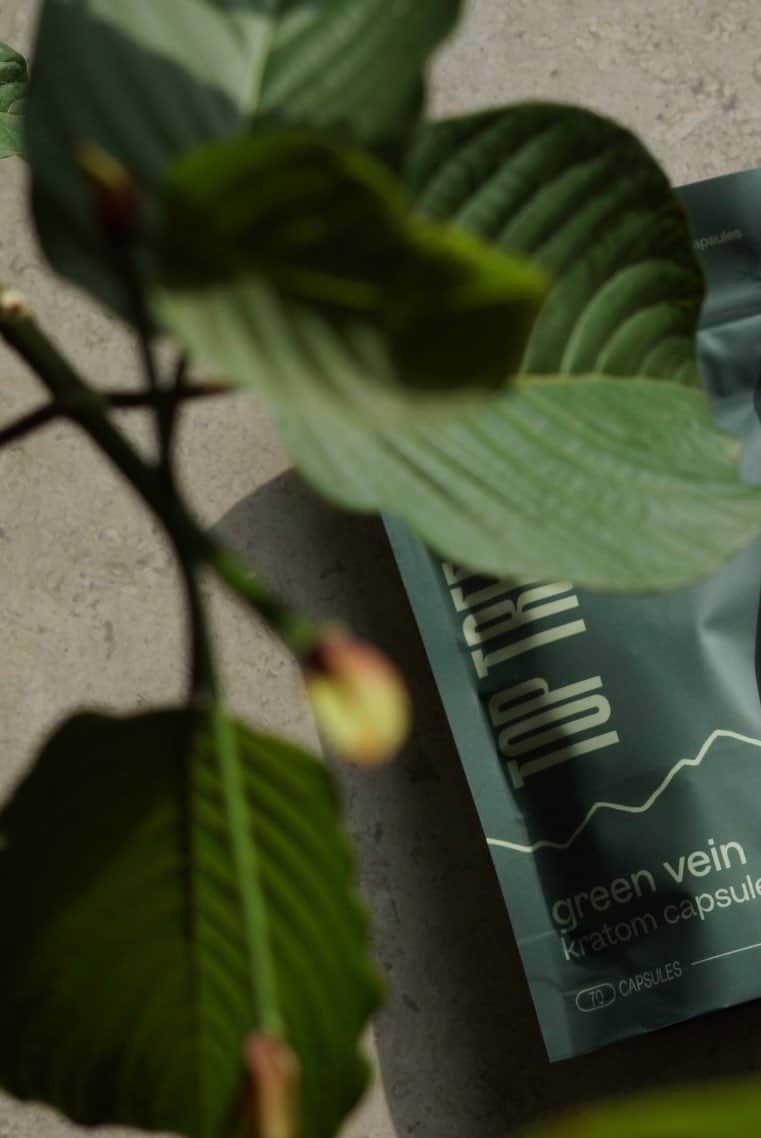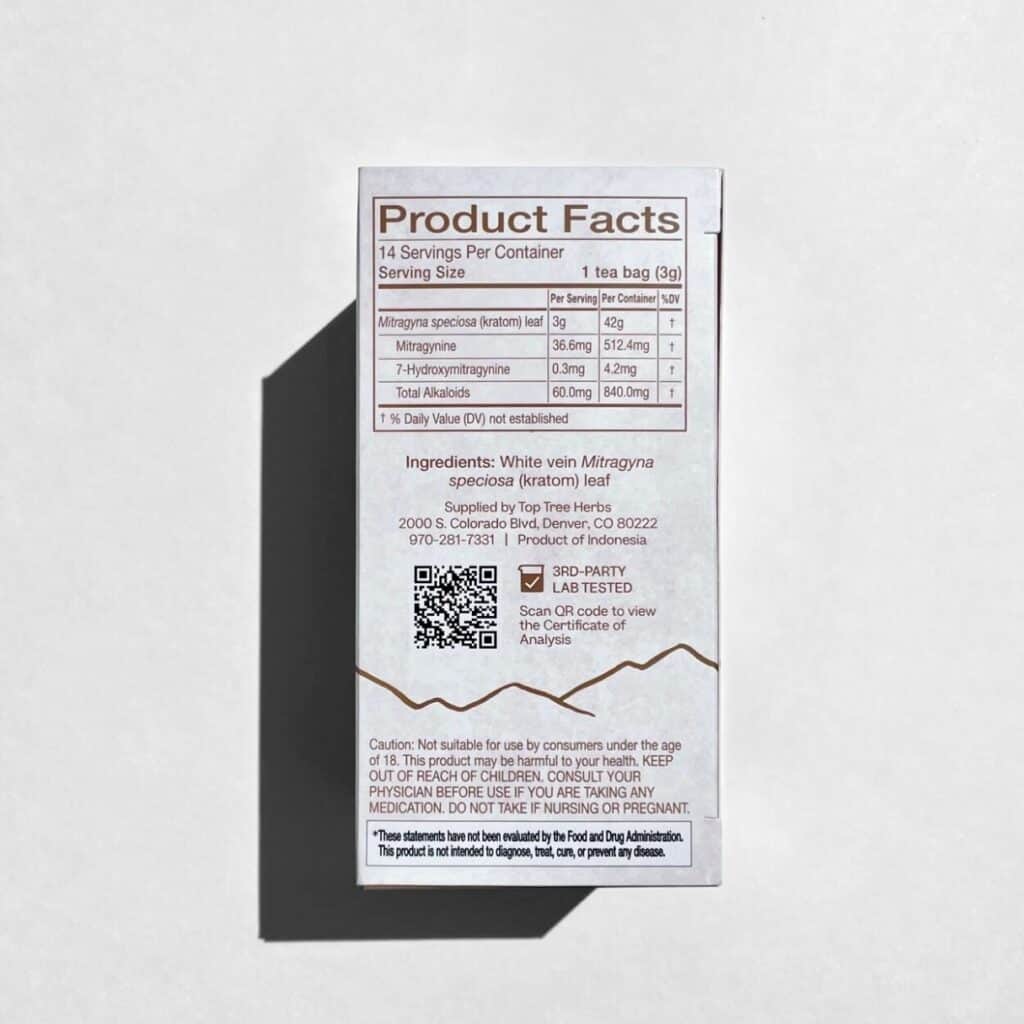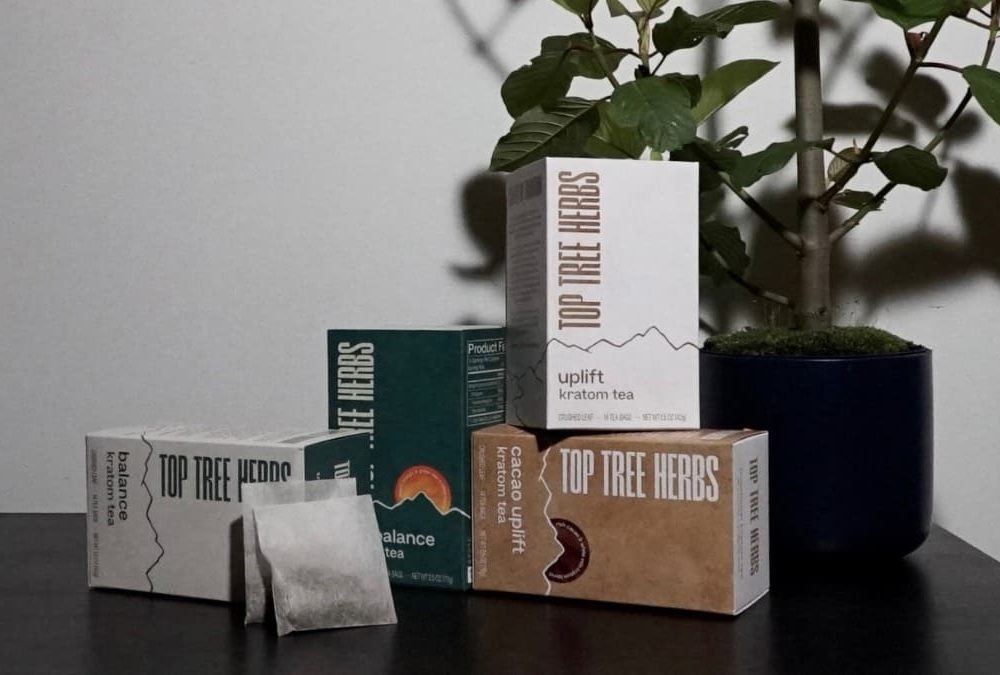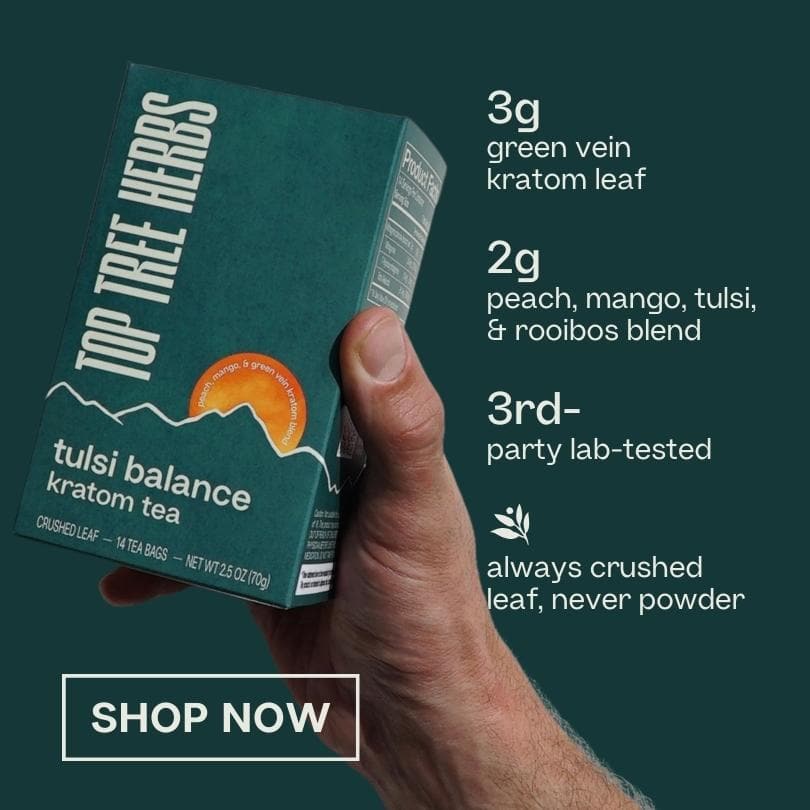Kratom companies put a lot of effort into marketing different kratom strains. A few of them, like Maeng Da or Super Green kratom varieties, have a lot of hype surrounding them in the kratom community. Have you been wondering how to choose a kratom tea strain? If you’re overwhelmed by the choices, we’re here to make things clear for you!
We’ve written in the past about the basics of strains along with our reviews of Top Tree’s strain options. Today, we’ll give you an overview of what strains are to provide a foundation of knowledge that’ll make it easy for you to pick a kratom tea strain. We’ll delve a bit deeper into the subject to clear up some of the confusion and misinformation surrounding strains.
One issue we’ll touch on is the truth about kratom “strains.” It might surprise you that kratom strains, as you’ve come to know them, may not be exactly as advertised—more on this below.
Another topic we’ll address is choosing the right kratom tea strain for your personal needs. In general, there are 3 separate kratom vein colors that you’ll commonly come across when researching kratom strains. These are white, green, and red vein kratom; some vendors have others, like yellow or black, which are typically a mixture of red, green, and white varieties. The various “strains” are subsets of the vein colors. Each of the strains are associated with their own particular “effects,” but we’ll explain why this may not necessarily be accurate.
Remember, it’s not just the kratom strain that produces certain effects. It’s also the serving size and the context you consume your kratom in – what foods you have with it, how recently you’ve eaten, etc.
Let’s get into the thick of it!
Myths Surrounding Kratom Tea Strains
As we previously mentioned, there is a mythos behind the various white, green, and red vein kratom strains.
Virtually any kratom vendor or informational source that you visit will contain some variation of the following (though none of these statements are direct quotes from any available source or vendor):
- White Vein Kratom: “White vein kratom strains are made from the juvenile leaves of the kratom plant. They’re great for a quick boost of energy. Useful as a pre-workout for physical activity and long study sessions.”
- Red Vein Kratom: “Red vein kratom is a stronger strain. Red vein kratom strains are made from the mature leaves of the kratom plant, and are great for relaxation. Drink red vein kratom before bedtime to wind down and calm your restless mind.”
- Green Vein Kratom: “Green vein kratom strains are an intermediate strain somewhere between a red and white vein kratom strain. Great to improve mental focus while still instilling a sense of well-being.”
We’ve even provided some similar guidelines for our strains of kratom tea in the past. While this breakdown of kratom tea strains is not inherently false, it may not encapsulate the complexity of kratom and its respective strains. There are a host of factors that contribute to the makeup of kratom strains, as well as what to expect from each one. So, what exactly is a kratom tea strain?

Kratom Tea Strains: The Truth
In reality, kratom tea strains are much more complex than the list that most vendors go by.
Kratom vendors typically categorize kratom strains within one of the three main vein colors. This due to the physical characteristics of the plant, specifically the color.
Again, we are not suggesting that there is anything wrong with this classification of kratom strains. In fact, there is no correct umbrella classification model for kratom strains. As such, many reputable vendors take an in-house approach to classifying a strain based on color, place of origin, and even feedback from customers.
While this approach is certainly better than blindly labeling kratom products and their effects, it’s not a foolproof method. All of the stores and brands do not have one concrete definition or categorization that they currently attribute to each respective strain of kratom. Why is that?
For the answer, we have to turn to biology!
Interested in reading about the myth of kratom strains in a bit more detail? Check out our previous article on kratom strain myths.
Kratom Science
Let’s begin with a little scientific synopsis pertaining to kratom’s classification – the whole plant, not just the strains.
In terms of plant taxonomy, kratom is part of the Rubiaceae family (as is your morning coffee). Despite common misconceptions, all kratom originates from the same plant, Mitragyna speciosa. There aren’t multiple species of plants called kratom (or subspecies of M. speciosa) which each produce their own unique strain.
It is true that kratom vein color can vary from plant to plant. Most of the vein colors used to classify strains that you see on the market are actually a result of various harvesting and processing techniques. After the leaves are processed, the main vein of the leaves may look more red or pale greenish-white. So what is it about vein color that causes people report experiencing different effects with different strains?
The Facts
Did you know that there are over 40 unique alkaloids found in kratom? In fact, nearly every strain of kratom you’ll see advertised by vendors has its own unique alkaloid profile. Active alkaloids in kratom, like mitragynine, play a role in some of the effects that kratom consumers reportedly experience.
So it would make sense that red vein kratom tea strains probably contain the most active alkaloids and alkaloids in general, right? Well, not necessarily so. Take this 2018 study for instance, where researchers studied the alkaloids present in 5 separate kratom strains: Red Thai, Red Malay, Red Bali, White Borneo, and Green Malay.
Although the Red Bali had the most alkaloids present overall (24 unique alkaloids compared to the Green Malay’s 11), it was the Green Malay that turned out to be the strongest. Why? Due simply to the fact that the Green Malay strain had a higher concentration of the active alkaloid Mitragynine present in the strain.
This is why we stress the fact that consumers should be cautious about attributing certain effects to one particular strain.
Choosing the Right Kratom Tea Strain
So, now that we know to be careful when trusting vendors’ claims about particular strains, how do you choose which kratom tea strain is actually right for you? That depends on your motivation for consuming kratom tea in the first place.
In general, vendors will use the white/green/red system to classify their kratom strains and report similar things across all strains of the same vein color. White for energy, red for sleep/relaxation, and green as an intermediate. You can read more about when to drink kratom tea here, but keep in mind that everyone is different. This system is not perfect, but when combined with a knowledgeable vendor, should give you a guideline for choosing an appropriate strain.
Beyond strains, you can also try kratom combined with other functional herbs and spices. For instance, our new Chai Unwind red vein kratom tea blend combines high-quality red vein kratom leaves with organic chamomile, rooibos, and chai spices. With hints of citrus and cinnamon, we recommend this kratom tea blend to wind down after a hard day’s work. In contrast, our Cacao Uplift white vein kratom tea blend utilizes energizing white vein kratom leaves blended with organic cacao shells.
In the past, we’ve also offered blends with adaptogens like ashwagandha or gotu kola. Ashwagandha is an evergreen shrub native to Asia and Africa. It’s commonly used to reduce stress, though more extensive research is needed to confirm its efficacy. These blends are an excellent choice for consumers looking for a jump-start to their day, without the potential jitters that have long been associated with caffeine.
Quality Matters
If you’re buying your kratom tea from a reputable source like Top Tree, these strains will have been tested for purity and potency. Testing kratom results in a higher level of consistency. However, keep in mind the aforementioned discrepancies between strains. All natural products are notoriously difficult to standardize across harvests and batches – though future kratom cultivation practices may make this easier!
As a final caution, we recommend starting with a lower serving size, regardless of strain. If logic follows, the more kratom tea you drink, the more alkaloids you’ll consume. Overall, use your best judgement when consuming kratom, regardless of what strain you opt for!
Where to Buy Kratom Tea Strains
With all of that information taken into account, where can you buy quality kratom that will suit your particular tastes?
Well, the obvious answer would be from our quality-tested Top Tree Kratom Tea Shop! Top Tree no longer uses strain names for its kratom teas, but instead uses vein colors and provides the alkaloid content on every box of tea.

If you choose to look elsewhere, here are some guidelines.
- Buy from a reputable vendor. Don’t assume every gas station kratom strain you come across is accurately labeled, or even safe for that matter. Five minutes of research into the vendor in question will tell you a lot about the quality of their product. Scan the packaging to check for any rips/tears, check to make sure all of the ingredients are clearly labeled, and make note of any suggested serving size for their product. A reputable vendor should have all of this information available.
- Only buy lab-tested kratom tea strains. Any vendor worth buying from will have their kratom tested for quality and safety control. If the vendor in question doesn’t even know the quality of their own product, how can you expect to? Lab testing ensures that the kratom has been grown in a contaminant-free environment, that no other substances have been added to your kratom, and that you know the concentration of major alkaloids in the product.
- Check product/vendor reviews. When in doubt, check to see other consumers’ opinions of the vendor and products before buying. They may have insight on a particular kratom tea strain that even the vendor may not be aware of. After all, personal experience with a product trumps guesswork. Keep in mind that individuals are individuals, and have their own unique experience with kratom tea strains. That experience doesn’t determine how others with be effected. Not everyone brews their tea the same way or mixes it with the same foods and drinks.
Resources for Choosing Kratom Strains from Reputable Vendors
If you’re extremely skeptical about choosing a kratom tea strain from an unknown vendor, you should always check out if the vendor uses American Kratom Association (AKA) cGMP-certified kratom. The AKA is a pro-kratom organization that advocates on behalf of kratom consumers and vendors on a global scale, and is considered the “go-to” source for all things kratom. Top Tree only uses kratom that is certified cGMP by the AKA.
The TLDR on How to Choose a Kratom Tea Strain
Hopefully we’ve cleared up some of the mysteries surrounding kratom tea strains, but just in case, let’s do a quick recap:
- At the time of this post, there is no set in stone way that kratom vendors categorize their kratom tea strains. For instance, one kratom vendor’s Red Bali kratom tea strain may contain a completely different alkaloid profile than a competitor’s kratom tea strain of the same name.
- All kratom tea strains come from one singular source: the Mitragyna speciosa kratom plant. Kratom vein colors are often produced during the harvesting and processing phases of kratom production.
- Kratom science is in its relative infancy, with new discoveries being made as we speak. Stay up to date by following reputable sources like the AKA or the Better brewing Blog for updates!
- Always buy your kratom from a reputable source that has their kratom lab-tested. This will help ensure your safety, as well as give you peace of mind that your kratom tea meets industry standards.
Well, that’s all for now folks! We hope that choosing the right kratom tea strain will be easier for you going forward. Feel free to browse the Better Brewing Blog more kratom tea guides, from which kratom vendors to avoid to a deeper dive into what kratom tea is good for!
Cheers to better brewing!






